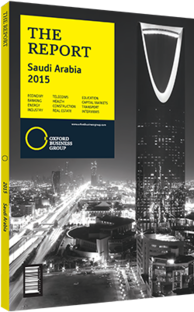Investors hope new destinations will help grow the domestic tourism market in Saudi Arabia
Domestic tourism in Saudi Arabia has enjoyed something of a surge in recent years, with spending rising from SR59bn ($15.7bn) in 2010 to SR103bn ($27.5bn) in 2014 – representing compound annual growth of 15%. Yet, taken on an individual basis, Saudis continue to spend significantly less per domestic trip than they do when travelling abroad: excluding transport costs, Saudis on average spend SR3631 ($968) per foreign trip, compared with SR1896 ($505) on leisure trips at home, according to statistics from the Saudi Commission for Tourism and Antiquities (SCTA).
Private polling indicates Saudi spending on foreign tourism is higher. According to a study by consultancy firm Frost & Sullivan, Saudi tourists spend an average SR43,000 ($11,460) on foreign trips, while local newspaper Al Sharqclaimed that the Kingdom’s 4.5m tourists spend SR80bn ($21.3bn) annually on trips abroad, six times more than Western counterparts, making them the globe’s highest-spending tourists.
Joint Ventures
It would seem clear, therefore, that while the Kingdom’s domestic market is expanding at an impressive rate, there nonetheless remains a great deal of untapped potential for new tourism products able to satisfy the discerning Saudi tourist.
Leading the charge in diversifying the Kingdom’s tourism offering has been the SCTA, which is currently working with the Public Investment Fund to establish the Saudi Tourism Development and Investment Company (STDIC). STDIC, which is expected to become operational some time in 2015, will have paid-up capital of SR200m ($53.32m) and provide a framework for joint ventures with private investors in tourism.
Several public-private partnerships have already been established by the SCTA, with the flagship project being the development of a mixed-use tourist resort at Al Uqair, located on the shores of the Gulf and the site of a historic ruined fortress. The Al Uqair development was first announced in 2006, and followed a pattern that is likely to become a model for the Kingdom: the SCTA produced a proposal for developing the site, and contributed a government share (through the Ministry of Municipal and Rural Affairs) in the form of land, which was converted into shares in a joint-stock company. The government then invited the private sector to contribute additional capital for the development of tourism facilities, while also providing SR1.4bn ($373m) of direct funding in the form of infrastructure investment, including electricity, water and sewage systems.
As of the end of 2013, the SCTA announced that the Al Uqair Development Company had attracted investments to the tune of SR17bn ($4.5bn) for the beachfront tourism development, while total investment in the wider Al Uqair area is expected to reach SR34bn ($9bn). The mixed-use project, which is planned to be completed in three 10-year phases, is expected to create almost 38,000 jobs and generate an additional 56,000 indirect and seasonal jobs. The first facilities should be ready for visitors by early 2017.
New Locations
With the Al Uqair model proving a successful one for organising collaboration between private and public sectors, investors are pushing ahead with further tourist developments in the Kingdom. In January 2015 a 2m-sq-metre project in Al Wajh was announced to local press as among the first five to be approved by the Ministry of Municipal and Rural Affairs. The new development will be completed in multiple phases, with the first – covering an area of 60 ha – poised to finish in three years. A larger second phase of some 140 ha is anticipated to be completed within five years.
Beyond these two initial projects, the SCTA has identified a number of other locations across the Kingdom with potential for tourist development. These include Al Berak, Tour Al Yazeed Park and Al Jarah Park in Aseer Province; Ras Al Tarfa, Farasan Islands and Jazan Dam Hot Springs in Jazan Province; and several other projects in Medina, Al Baha and Al Jouf Provinces. The SCTA is also looking into expanding the variety of options available to domestic tourists, with eco-lodges, heritage hotels and adventure tourism identified as areas where the Kingdom currently has underdeveloped potential.
You have reached the limit of premium articles you can view for free.
Choose from the options below to purchase print or digital editions of our Reports. You can also purchase a website subscription giving you unlimited access to all of our Reports online for 12 months.
If you have already purchased this Report or have a website subscription, please login to continue.

